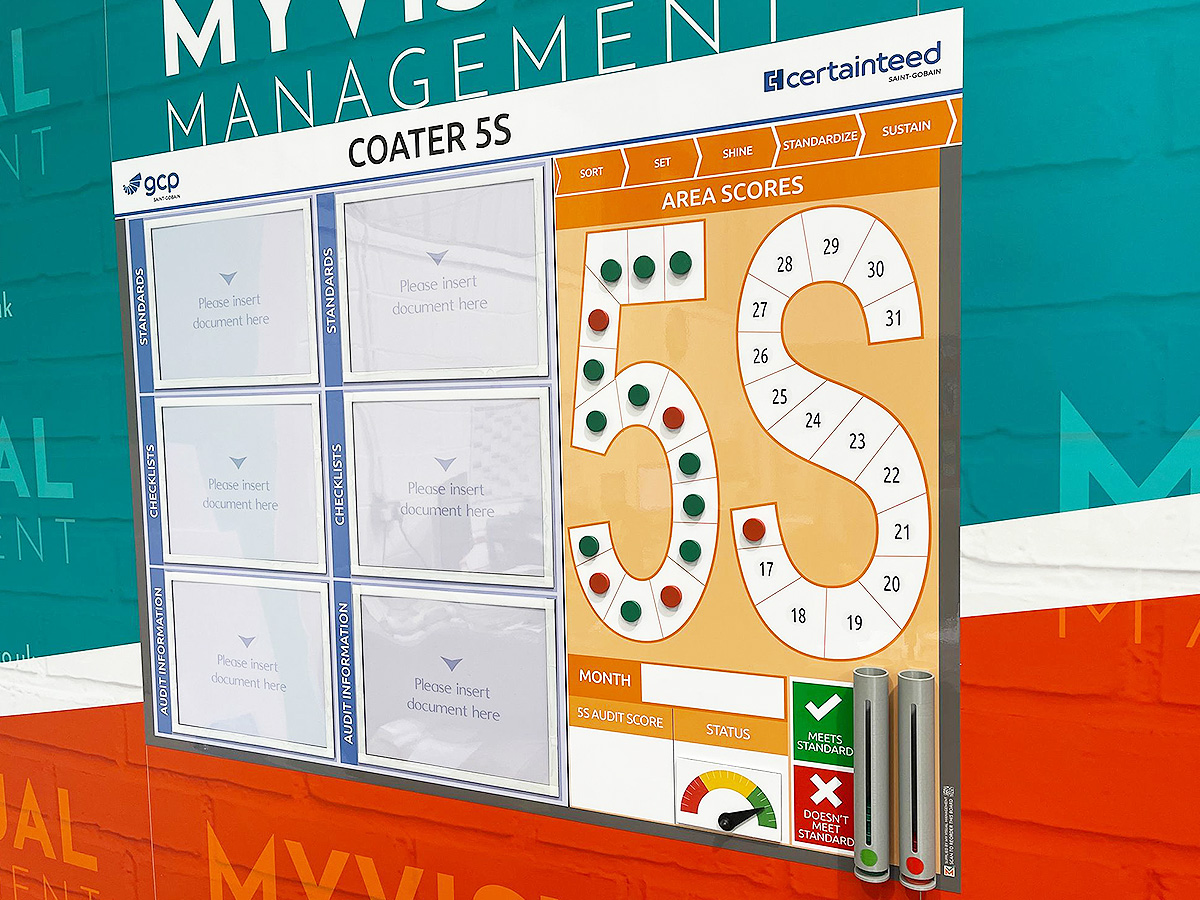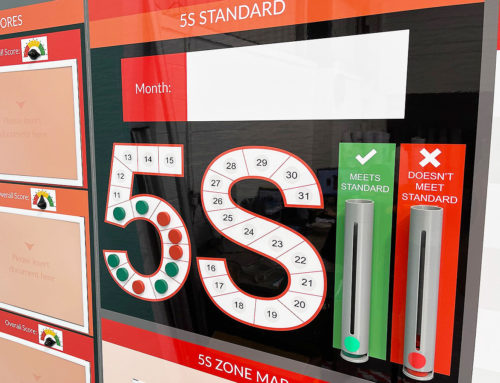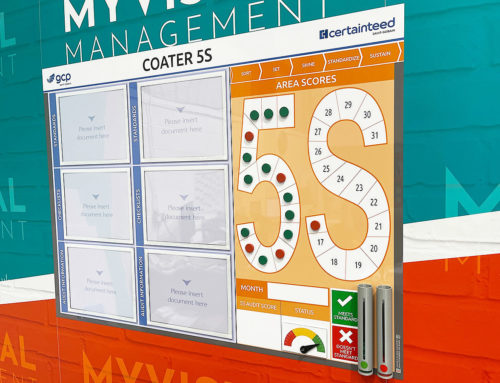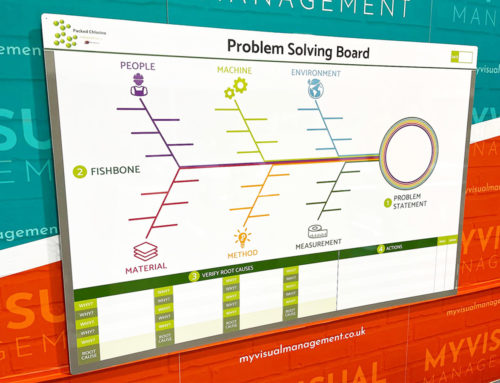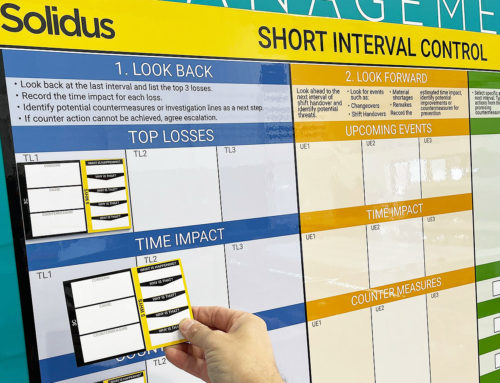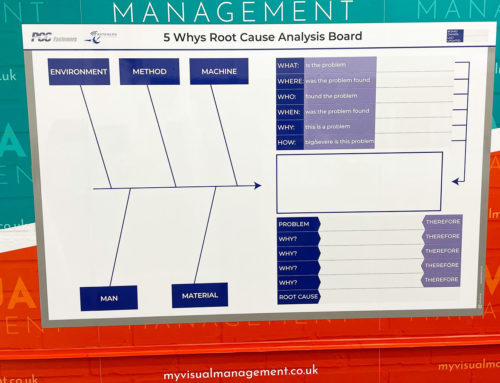Consider how to understand 5S by working through these key actions for each S.
How to understand 5S – SORT
In short, sort out your work area by addressing these actions:
- Firstly, clear your working area as much as you can.
- Secondly, while clearing, identify indispensable tools and essential equipment.
- Likewise, recognise unnecessary items that cause clutter.
- Consequently, red tag any unnecessary or unused items.
- Next, remove red tagged items and put them in a designated Red Tag area. For a couple of weeks after, you can always retrieve them if you subsequently decide you need them. Otherwise, ultimately discard them altogether to rid the clutter.
- Continue to clear your work area and focus on good use of space for equipment you need.
- To help, put in place tool shadow boards.
- Carry out regular reviews to support an excellent housekeeping habit.
How to understand 5S – SET IN ORDER
Above all, this SET IN ORDER stage is about using your available space in the most logical way. So, work through these actions:
- Evaluate if your working area operates well day-to-day. In other words, is it logical and easy to use? If not, then put in place improvements to make it more logical.
- In addition, consider if designating and differentiating specific areas within the workspace would help.
- Likewise, review how easy it is to locate and access key equipment. Further improve accessibility of equipment by putting them in an intuitive and readily available location.
- Next, consider storage. Are items stored and kept efficiently? If key items are hidden away or difficult to find then take time to address this.
- In addition, think about visual signposting. That is to say, use effective visual management to show how the work area operates and where equipment lives, how designated areas are used and so on…
- Finally, consider if important information relating to daily processes is readily available. Ideally, at a glance. If not, make it visually accessible. In other words, deploy daily management boards.
How to understand 5S – SHINE
SHINE digs deeper and requires being granular in your approach.
- Most importantly, consider if health, safety and hygiene are paramount in your working area. Further support this by implementing visual safety communications boards.
- Next, put in place and review cleaning schedules. Firstly, are they working well? Secondly, can improvements be made? In addition, support your team with cleaning stations.
- Furthermore, evaluate if maintenance or other checks are running smoothly and carried out often enough. Consider if your process is visible enough and whether it is clear who takes responsibility for checks.
- Carry out regular inspections and audits to build best habits.
- In addition, can you make it more visible when action is required? So, consider using status boards. As a result, your team always knows current status and when to take action…
How to understand 5S – STANDARDISE
Above all, STANDARDISE best practices. Likewise, continually improve best habits.
- Firstly, critically evaluate standard operative procedures. Furthermore, consider if they are adequately clear and accessible. If not, implement SOP boards.
- In addition, make use of visual controls to visually support your process and your team.
- Next, consider if you have adequate training in place for your team. Can any improvements be made here?
- Drive team engagement. For example, are there suitable systems in place to gain staff feedback? If not, implement a feedback board.
How to understand 5S – SUSTAIN
Commit to sustaining all these actions and building them into a habit that drives your organisation. Ultimately, embed best practices in the culture of your workplace.
- Implement performance boards to continually monitor track progress, and to make it visual. Similarly, put in place 5S boards.
- Celebrate and reward excellence in a visual way. For instance, with team management boards.
- Support your team with on-going training and ways of making communications visual.
- Encourage all colleagues to commit to the granular actions necessary to achieve success and support Continuous Improvement.
Use a Red tag board as part of the SORT phase of 5S.
Make use of cleaning stations to support SHINE
Make key information visible, at a glance with daily management boards.
Introduce daily tracking to SUSTAIN best habits.
Use safety information boards to make key info available, at a glance.
Status boards are a powerful and visual way to drive action.
Make audit results visible and accessible to SUSTAIN your 5S strategy.
Use visual management to drive Continuous Improvement.
Examples of our 5S and 6S Boards
Our Approach
We create visual management boards everyday. As a result we have plenty of experience. We work for organisations in food production, the power industry, national rail, pharmaceuticals, education, healthcare, packaging and distribution.
Our team works with a simple idea or sketch and creates a professionally designed layout. This is then turned into a highly functional visual management board.
We offer customised options because we want to create the perfect board for you. So, here are a few examples. We can add magnetic areas or a dry-wipe finish (for use with whiteboard pens). Furthermore, you can choose Red/Green sliders or R.A.G. (Red, Amber, Green) status dials so you can quickly and visually update your board. These are just a few examples of the ways in which our boards can be tailored to meet your needs. You may also be interested in whiteboard overlays that can be used on top of an existing magnetic board.










